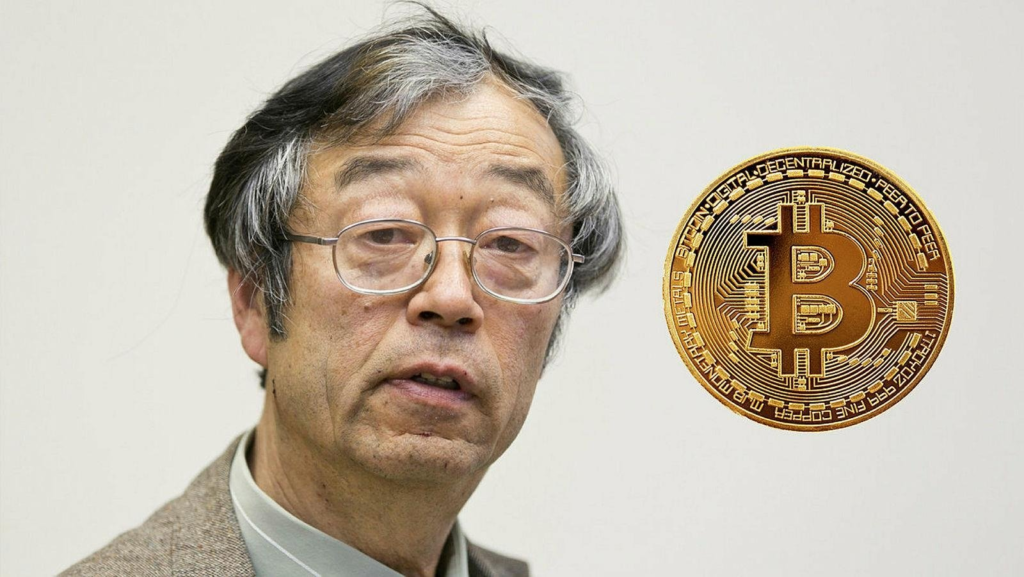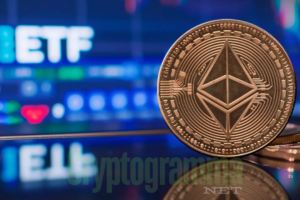Bitcoin Value History: The New Digital Gold

In this article, I will reveal to you the simple truth about Bitcoin value history and why it is so expensive and will be even more valuable in the future. I will start my article by touching on the distant years of 1840-1860. But what does that time have to do with Bitcoin at all?
Bitcoin Value History: The New Digital Gold
Let’s recall the words of BlackRock CEO Larry Fink: Bitcoin is the new digital gold. This was a hint for us on which direction to look and how to understand his words.
The California Gold Rush: An Analogy
In 1846, California officially became part of the United States. The population was small—only a few tens of thousands—and the main occupation in this state was hunting. There was no infrastructure, and the territory of this state consisted of small villages. Even the population of San Francisco was about 500 people, and it was hard to call it a city. However, the discovery of gold in this state brought about a drastic transformation.
By 1850, more than 200,000 people had moved to California to live and work. The people who first took up gold mining began to get rich; there was a lot of gold in the surface layers of the soil. No technology was required to extract it; you could even use a pot to create a sieve and cleanse the soil. People quickly realized that working for someone who owned gold-mining land was an easy way to become wealthy, allowing them to earn 20 times more than those in average jobs. This led to an unprecedented influx of people to this state. At the time, it was the largest migration in the United States. This was the beginning of the gold rush.
Bitcoin Value History: From Mining to Market Highs
It is clear that over time, surface gold deposits began to deplete, which forced miners to search for new gold deposits in California. Miners mined gold worth $50 billion in today’s money during the Gold Rush.
Although it might not seem like much, those who supported the gold mining industry made the majority of the money.
Industries Benefiting from the Gold Rush
Among these people were those involved in logistics and who built the railroad, which established logistics in California; at the time, a ticket to this state cost the equivalent of hundreds of dollars today. People paid such crazy amounts back then to go to this Eldorado and get rich. Entrepreneurs who sold clothes and other basic necessities to the working class also made money. The creator of jeans, Levi Strauss, also earned his first capital during the Gold Rush. He made pants for prospectors out of coarse canvas. It turned out that this was the most necessary thing for people working in the soil—convenient and durable.
Those who realized early on that gold mining tools, such as picks, could yield the highest profits made the most money. The demand for work tools was incredibly high at that time, leading to the emergence of monopolists who kept the mining tools in one hand and sold them at an incredible markup. Despite this, people continued to buy these tools, driven by their dreams of becoming wealthy. The story of a miner who successfully extracted a nugget weighing almost 100 kilograms added even more euphoria to the business.
Reading the text of this article, do you not see analogies with Bitcoin (and the Gold Rush) in this asset?
Nvidia and the Cryptocurrency Market
Nvidia’s rise to the top of the global capitalization rankings is not solely due to their sale of mining tools. They are the largest producer of mining capacity for Bitcoin and other cryptocurrencies. Have you ever noticed the significant rise in graphics card prices and overall PC prices during Bitcoin’s market highs, and the sharp decline in these prices during a bear market phase? Similarly, exchanges are like logistics companies that provide access to tools for earning on the crypto market. There can be many analogies, but I see no sense in listing them all. Anyone who understands crypto, even a little, will get the point I want to convey in this article. Indeed, what is happening now with crypto has many echoes and logic from previous years, past El Dorado.
Now, let’s specifically discuss cryptocurrency and the digital gold rush, but first, let’s delve into the history of how the cryptocurrency market first emerged. While the situations are very similar, the Bitcoin rush has undergone an evolution that sets it apart from the gold rush.
The History of Cryptocurrency Emergence
In 2008, one of the largest banking crises of all time occurred. The Federal Reserve Bank (FRB) of New York held a two-day meeting behind closed doors in mid-September 2008 to prevent a financial catastrophe. The meeting included FRB head Timothy Geithner, then US Treasury Secretary Henry Paulson, and the heads of the country’s largest investment banks, Goldman Sachs, Morgan Stanley, Merrill Lynch, and Lehman Brothers, all on the verge of bankruptcy. They decided to sell Merrill Lynch to Bank of America on the evening of September 14.
A financial tsunami was approaching Wall Street.
The Impact of Financial Crises on Bitcoin Value History
“We know we have hard work ahead, but it is in this kind of work that we have excelled. We can make the best purchase in the world and create the best financial institution in the world.” said Bank of America Chairman Ken Lewis at a press conference following the meeting. However, Lewis’s efforts were in vain. Everyone understood that a financial tsunami was approaching Wall Street. That same night, it became clear that Lehman Brothers could not avoid bankruptcy. And on the morning of September 15, before trading began, the Dow Jones index fell by 300 points.
The news reported that on September 15, 2008, with Lehman Brothers declaring bankruptcy, the 158-year history of the bank, which had survived the industrial revolution and two world wars, ended. The crisis on Wall Street caused market collapses worldwide. “I never thought this could happen. Over one weekend, both Lehman Brothers and Merrill Lynch fell. This is a historic event,” said Alan Valdes, a 20-year-old broker, in an interview with an American TV channel.
Free-market capitalism ceased to exist.
The Fall of Lehman Brothers
But why did Washington allow the bankruptcy of Lehman Brothers, the fourth-largest investment bank in the US? After all, six months earlier, it had decided to help the slightly smaller Bear Stearns bank. Experts are still looking for the answer to this question. According to Wall Street broker Jason Weisberg, the US administration “started choosing which banks to help and which not. By that time, free market capitalism had ceased to exist, and this was no longer the natural development of the situation. Now a few very powerful forces were deciding whom to help and whom to leave aside. They helped Bear Stearns and did nothing for Lehman Brothers.”
Unofficial Theories
Wall Street insiders have their own unofficial version of what happened: in the summer of 2008, US Treasury Secretary Paulson allegedly gave Lehman Brothers CEO Richard Fuld a series of recommendations on how to avoid bankruptcy, but Fuld sharply rejected these suggestions, stating that he had been running Lehman for 15 years and did not need advice. Paulson took offense, and the bank’s fate was essentially decided.
Causes of the Financial Crisis
Meanwhile, one of the main causes of the crisis lies in the 1990s: then-US President Bill Clinton promised that every American would have their own home. The second important cause was the cheap money policy pursued by Federal Reserve Chairman Alan Greenspan. For two years, the floating mortgage rate was very low but then sharply increased. Hundreds of thousands of homeowners, unable to pay their debts, were forced to sell their homes at auction.
The results of the first year of the financial crisis look shocking: in the United States alone, the deepest recession in 80 years led to the loss of almost seven million jobs. Worldwide, over $26 trillion in savings vanished from stock markets, and almost the same amount had to be spent by taxpayers in the US and Europe to avoid a greater catastrophe.
Imagine the pain in the market back then. People lost a total of $26 million!
And here, after all these shocking events, an anonymous person under the pseudonym Satoshi Nakamoto created a pill for all financial market woes.
Satoshi Nakamoto and the Birth of Bitcoin

Satoshi Nakamoto created Bitcoin for several main reasons, as stated in the whitepaper:
- Decentralization of the financial system: One of the main reasons was to create an alternative financial system independent of central banks and governments. This avoids the risks associated with centralized financial institutions, such as bankruptcies or abuse of power.
- Protection against inflation: Bitcoin has a limited supply of coins (21 million), which prevents currency devaluation through inflation, often caused by excessive money printing by governments.
- Transparency and security: Using blockchain technology ensures transaction transparency and high security, as each transaction is recorded in a public ledger, making it impossible to forge or destroy.
- Privacy: Bitcoin enables transactions without revealing personal information, protecting user privacy.
Bitcoin allows transactions without intermediaries, significantly reducing money transfer costs, especially for international transactions where traditional bank fees can be very high. These factors made Bitcoin an attractive tool for those seeking an alternative to traditional financial systems and value-storage methods.
Learn more about Blockchain Technology
Early Days of Bitcoin Mining
Initially, anyone with a PC could mine Bitcoins, and they mined them in very large quantities. Most of all possible bitcoins were mined before 2015, when there was no mass adoption of crypto. But due to the halving process, which involves doubling the difficulty of mining blocks, it becomes harder to mine over time. Also, due to increasing hash rates (mining difficulty), more powerful tools are required. Today, mining Bitcoin is generally not very profitable for the retail (working class). The price of mining power is growing annually, as is the payback period. If previously you could mine tens or hundreds of bitcoins on a regular PC, now, even with a home mini-mining farm, you will only mine a small fraction (Satoshis, a fraction of bitcoin). However, this does not mean that mining is completely unprofitable or a foolish endeavor. Large
Players with powerful mining farms and access to cheap or free electricity feel quite good. It is getting harder for medium- and small-scale miners with each halving. If the logic here is already clear, then it is time to move on.
Understanding Miner Capitulation in Bitcoin Value History
In crypto, there is the concept of (miner capitulation. This process occurs every time during the bear market cycle, especially in its final stages, when Bitcoin’s price temporarily falls below mining costs. Capitulation happens because, at such times, miners operate at a loss, and most miners use borrowed investment capital, adding financial pressure and financial responsibility to their investors. It will be especially painful for those mining companies (or retail miners) who bought tools for mining when the market was overvalued (a bubble). It is less noticeable for miners who bought tools during capitulation at much cheaper prices, reducing their investments and payback period.
Bitcoin Value History and the Four-Year Cycle
Overall, considering the full cycle, we have the following figures: halving occurs once every four years. That is why I constantly talk about the big four-year cycle in which I work, and whether you like it or not, the cycle will happen because it is the basis of a huge business process involving incredibly large sums of money. During miner capitulation, large players bought those mining companies that could not withstand the pressure and went bankrupt. Even large players suffer during this period, but not critically, as they stock up on Bitcoin and sell it at market cycle highs to repeat the four-year money cycle again.
Future Predictions for Bitcoin Value History
In the future, there will be no place for small and medium miners in this game. The more cycles pass, the higher the hash rate and the price of mining power. Now let’s move on to the next point. Miner capitulation occurs twice per cycle. The first time was during the hot phase of the bear market cycle; the second time, but less painful, was right after the halving.
At these times, the profitability of this business becomes negative. And of course, the glorious Nvidia company, some time after the halving, releases innovative next-generation equipment that will definitely make you rich! And how to sell this equipment (to the working class), you ask? It’s very simple: the main thing is to drive the price of Bitcoin to new historical highs, so the Gold Rush process happens again, then an extraordinary demand from people is created, and Nvidia creates the supply for them.
Nvidia’s Role in the Bitcoin Market
New mining hardware from Nvidia, based on the Blackwell architecture, is expected to be released in mid-2024. Nvidia plans to release its new Blackwell B100 GPUs for data centers in the summer of 2024, meaning consumer models, including mining hardware, may hit the market by the fall of 2024.
Now, do you understand how the market cycle works? And what drives it?
Why would big players wait dozens or even hundreds of years to earn crazy money during the Gold Rush on the working class? They came up with a scheme to do it every four years.
Bitcoin is the perfect asset with a perfect legend for retail. There can't be a monopoly on Bitcoin; it's a people's tool for getting rich! They said...In addition to this story, major financial institutions such as BlackRock, Vanguard, Fidelity, Bank of America, and others joined the plan; they have long owned shares of the largest mining companies, Nvidia, and in 2022, took a stake in MSTR (the company that is the largest holder of Bitcoins on the market, and of course, its stock price directly depends on Bitcoin’s price).
Illusion of Competition in the Market
When the American people began to fight against the monopolies of the Rockefellers and Rothschilds, there were clear manipulations, and people did not like that they were being exploited for unfair value. The powers that be came up with the idea of creating several financial institutions that seemingly belonged to different people—they created the illusion that monopolies were gone. People swallowed it and did not even realize they were still in the hands of monopolists.
Now that you understand why and at what cost Bitcoin will continue to rise, and how this ties into Bitcoin value history, everything is logical, isn’t it? Now, do you guess who this hero of humanity could be—Satoshi Nakamoto!?
I could write a whole book on this topic, but why would I? Most people won’t even read this short article, which doesn’t contain all the details of what’s happening—just the essence. But those who read my articles—I respect you; this material is made for you, so use it.




